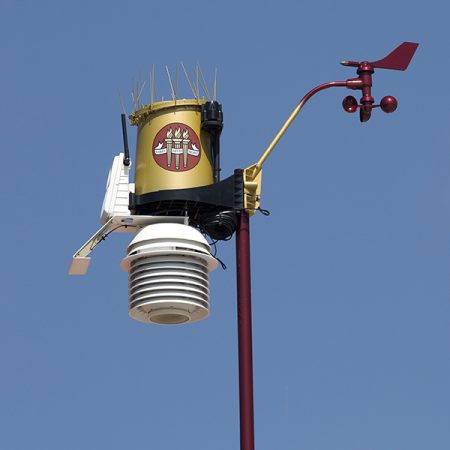
In April, a powerful line of thunderstorms was barreling toward Florida State University’s main campus in Tallahassee, bringing with it severe lightning and dangerous rain and wind conditions.
At the same time, Florida State’s WeatherSTEM unit sent detailed weather information to FSU’s emergency alert system, including the exact location of lightning strikes and precise wind speeds. Dave Bujak, the FSU Director of Emergency Management, acted quickly to alert people on campus to seek shelter immediately until the threat passed. While there were no injuries reported, the line of storms was powerful enough to bring down large trees around campus, even damaging part of the baseball stadium.
Bujak credits the lack of injuries during this and many other severe weather events in large part to FSU’s dynamic use of its local WeatherSTEM unit. WeatherSTEM units are full-service weather stations that measure atmospheric conditions such as wind speeds, humidity and rainfall and transmit the data to servers for future use. Edward Mansouri, the CEO of Ucompass, the technology company behind WeatherSTEM, donated the unit to FSU.
FSU relies on the WeatherSTEM network of weather stations for severe weather monitoring, preparedness, education and outreach. The system also provides several unique features including real-time lightning detection and solar radiation measurements,all of which can pose life-threatening consequences.

“Our WeatherSTEM system allows us to see real-time weather conditions right on campus, as opposed to the Tallahassee Regional Airport 5 miles away, which hosts the closest official National Weather Service data point,” Bujak said. “When it comes to extreme rainfall amounts or damaging wind gusts, 5 miles makes a huge difference.”
During the same April storm, FSU’s Coastal and Marine Laboratory (FSUCML), located in St. Teresa, Fla., was using its own local WeatherSTEM unit to decide if it was safe enough for planned research trips to take place. Because the lab conducts a variety of sea-based experiments each day, often many miles from the coast, having on-the-spot weather data plays a critical role in keeping people safe.
FSUCML staff members also use the WeatherSTEM information to monitor temperature and humidity in facility greenhouses to ensure that the automatic cooling systems are working correctly, which is critical for the success of experiments being carried out there. In addition, FSUCML users have been taking advantage of the WeatherSTEM LEARN link, which provides access to an enormous array of study plans on scientific topics that range from animal migration to the effects of climate change on the planet.
“We have been able to put our WeatherSTEM system to fantastic use and continue to discover new ways to incorporate it into lab activities,” said Felicia Coleman, director of the FSUCML. “It has helped protect us and our equipment, helped ensure our experiments stay on track and it has saved us a lot of time and energy that would have gone to waste without the information it provides.”
In addition to the FSU main campus and FSUCML WeatherSTEM units, Mansouri has donated units to the FSU Ringling Museum of Art and FSU’s Panama City, Fla., campus. He also has donated units to schools in more than half of Florida’s counties.
Mansouri’s goal is to make ordinary weather information intriguing and introduce students to science using real data by placing at least one WeatherSTEM unit in every county by the end of the year.
“We are grateful FSU has given us the opportunity to place WeatherSTEM systems at four of its properties in Leon, Franklin, Sarasota and Bay counties,” Mansouri said. “This has helped us identify applications for the program in public safety and scientific research, well beyond the program’s initial focus of STEM education. As an alumnus of FSU, I couldn’t be happier to be collaborating with my alma mater to find new and exciting ways to use WeatherSTEM.”




